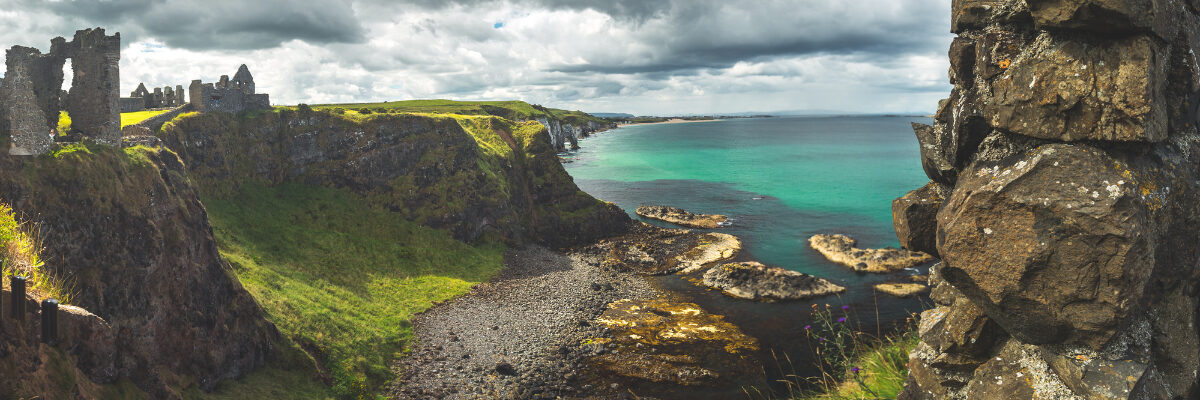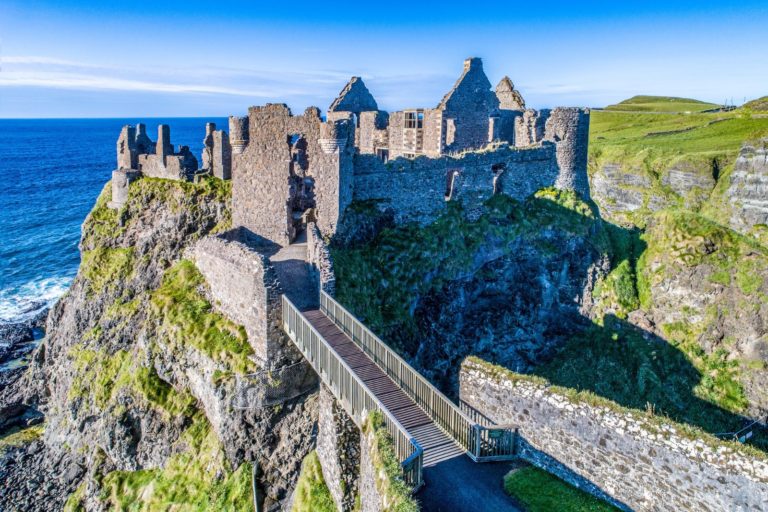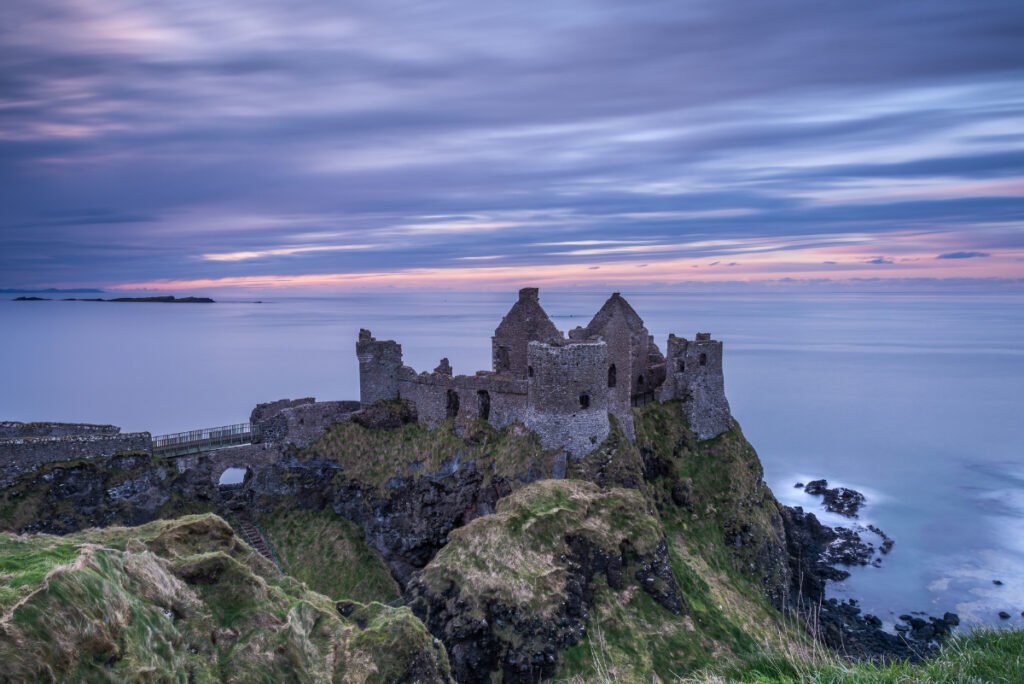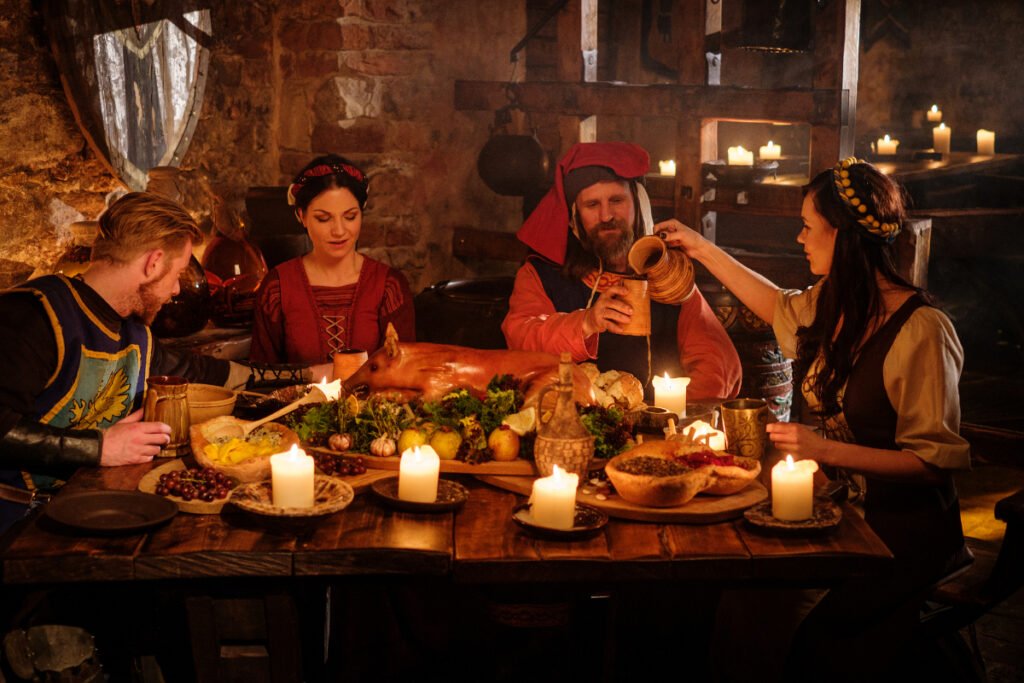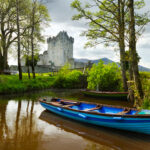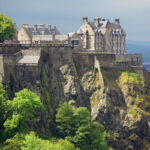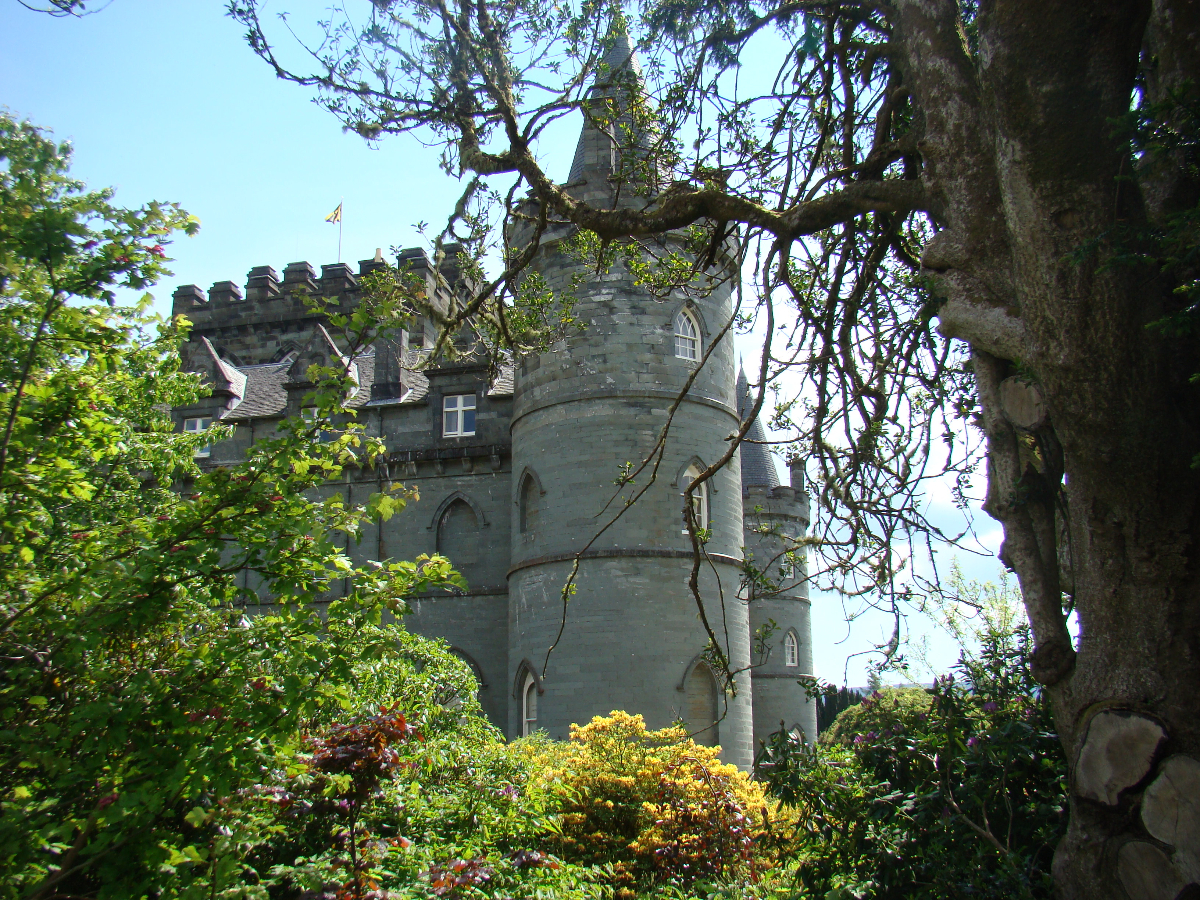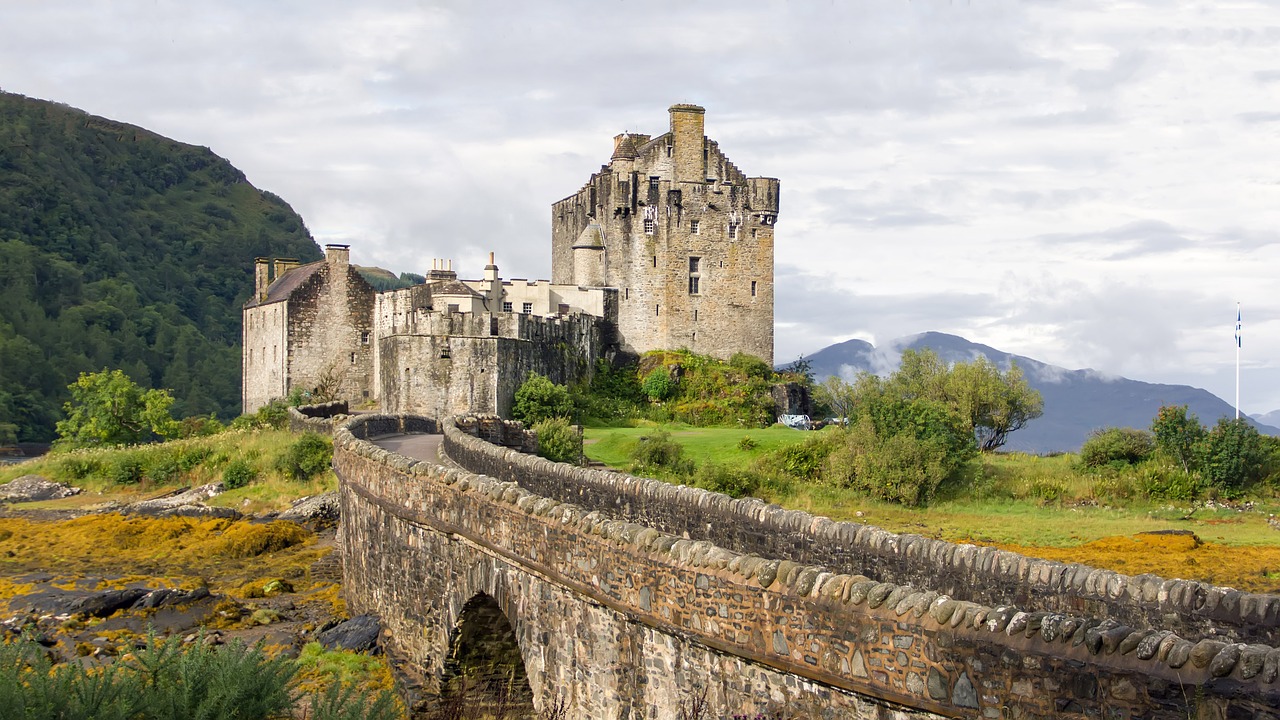It is said that Northern Ireland’s Dunluce Castle may have been the inspiration for Cair Paravel in C.S. Lewis’ Chronicles of Narnia: The Lion, the Witch, and the Wardrobe.
True or not, the location of the four thrones of High Kings Peter the Magnificent and Edmund the Just, High Queens Susan the Gentle and Lucy the Valiant, is nowhere to be seen. But with such a mystical setting, it’s easy to see why C.S. Lewis could have been inspired by the ruins of this castle.
I visited the castle during a recent trip through Northern Ireland, on my way to the famed Giant’s Causeway. Dramatically perched 100 feet above the churning Irish Sea, the castle sits upon a volcanic crag on Northern Ireland’s North Antrim coast. Once the headquarters of the MacDonnell Clan, the castle is believed to date back to the 14th century, even though the first actual record of it was in 1513 when it was owned by the MacQuillans.
Visitors through the ages
Visitors have been coming here long before that, though. Geographia.com says: “The nomadic boatmen – Ireland’s first inhabitants – who crossed from south-west Scotland in about 7,000 BC and left their flinty axes all along this rugged coast, must have seen the crag from the sea and may have ventured their flimsy coracles into the huge cave that runs through the rock to the land.”
An early Irish fort once stood on this romantic, windswept spot, and it was visited by early Christians and Vikings. It wasn’t until the arrival of the Normans, though — those masters at selecting strategic locations to build their castles — that this castle was built.
Seeing the castle ruins as I did, on a cold, misty day, made it easy to imagine what it was like here for early inhabitants. This desolate site was also witness to a colony ship that broke up on the rocks of Islay in 1857, claiming 240 lives.
A strong fort
Dunluce means “Strong Fort” and indeed it was. The fort here was converted to a keepless castle by the Normans in 1305 AD. by Richard de Burgh, Earl of Ulster. A clan stronghold, Dunluce had a superbly designed defensive structure and was the scene of many sieges and battles. From Geographia.com:
“The battling MacDonnells ruled all this north-eastern corner of Ulster in the late 16th century. Steeped in myth and legend and inhabited by giants, ghosts, and banshees wailing through the sea mist, it has the most dramatic coastline in the British Isles.”
In 1584, the castle was captured from the English by Sorley Boy MacDonnell. In a stunt worthy of a movie, one of his men, employed in the castle, hauled his comrades up the cliff in a basket. Sorely Boy modernized the castle in 1588 when he came into money after the Spanish Armada treasure ship, Girona, sunk in a storm off the Giant’s Causeway.
What about the kitchen?
He may have forgotten to modernize the kitchen, though, for on one stormy October night in 1639, the kitchen, along with the cooks, the pots, and the pans, tumbled into the sea.
The 17th-century courtyard contains domestic buildings and leads downhill to a narrow crossing to the rock, originally protected by a drawbridge to the gatehouse. The buildings on the rock are 16th and 17th century.
Recent archaeological excavations of Dunluce Castle have revealed that an incredibly well-preserved merchant town surrounded the castle, built-in 1608.
Steeped in history and legend, Dunluce Castle is an interesting place to visit. And you know what’s great? You won’t have to walk through a Wardrobe to get there!

